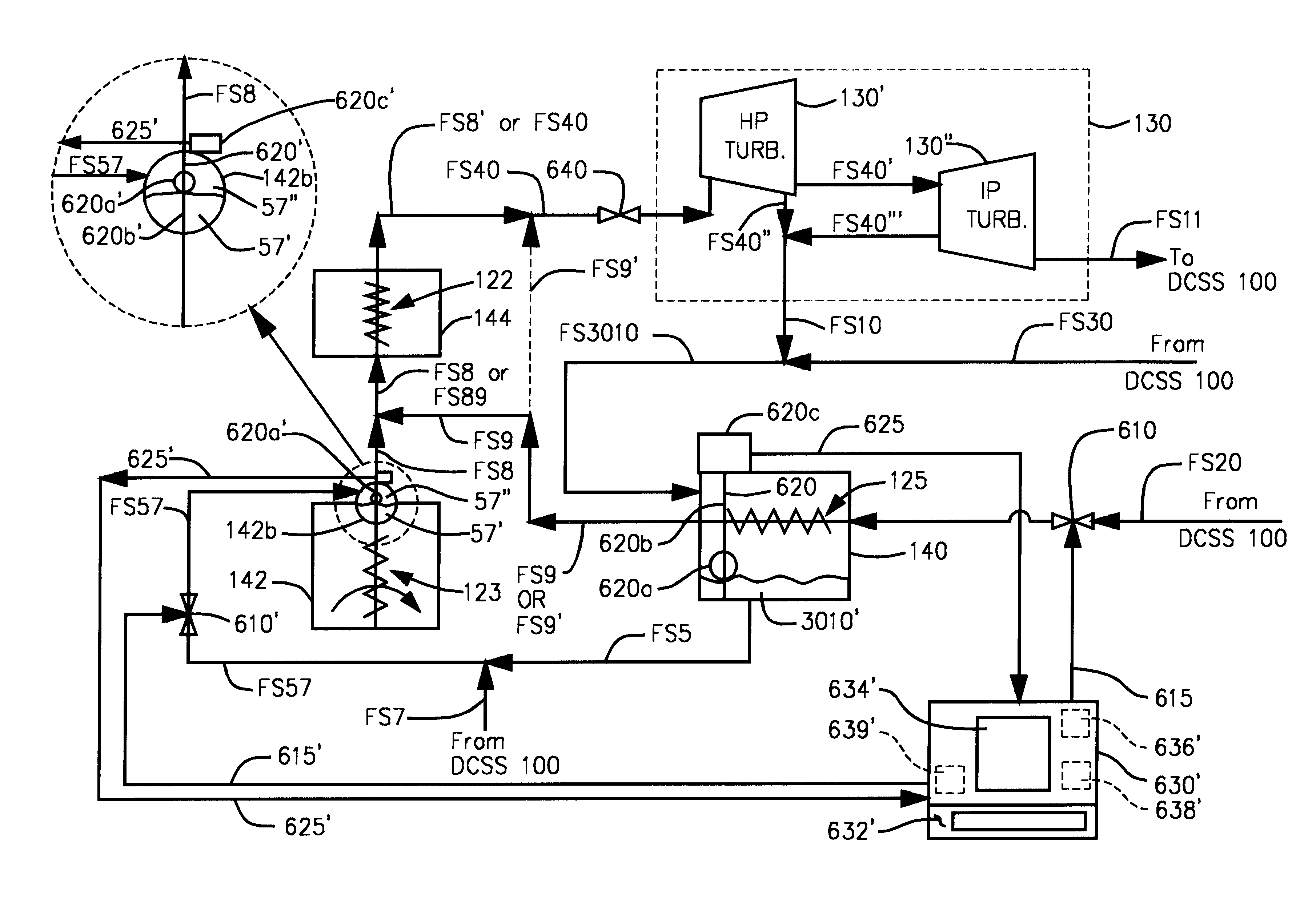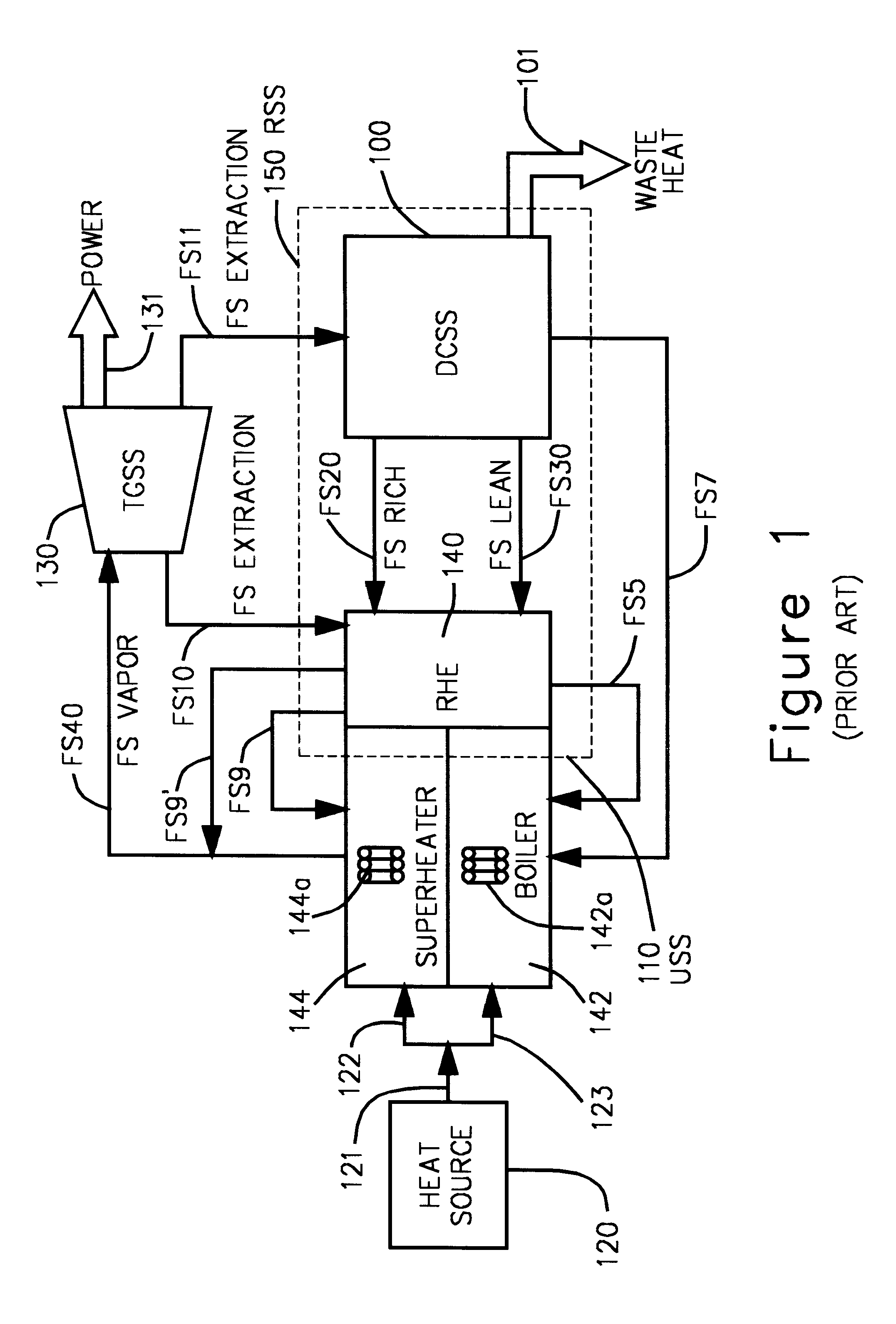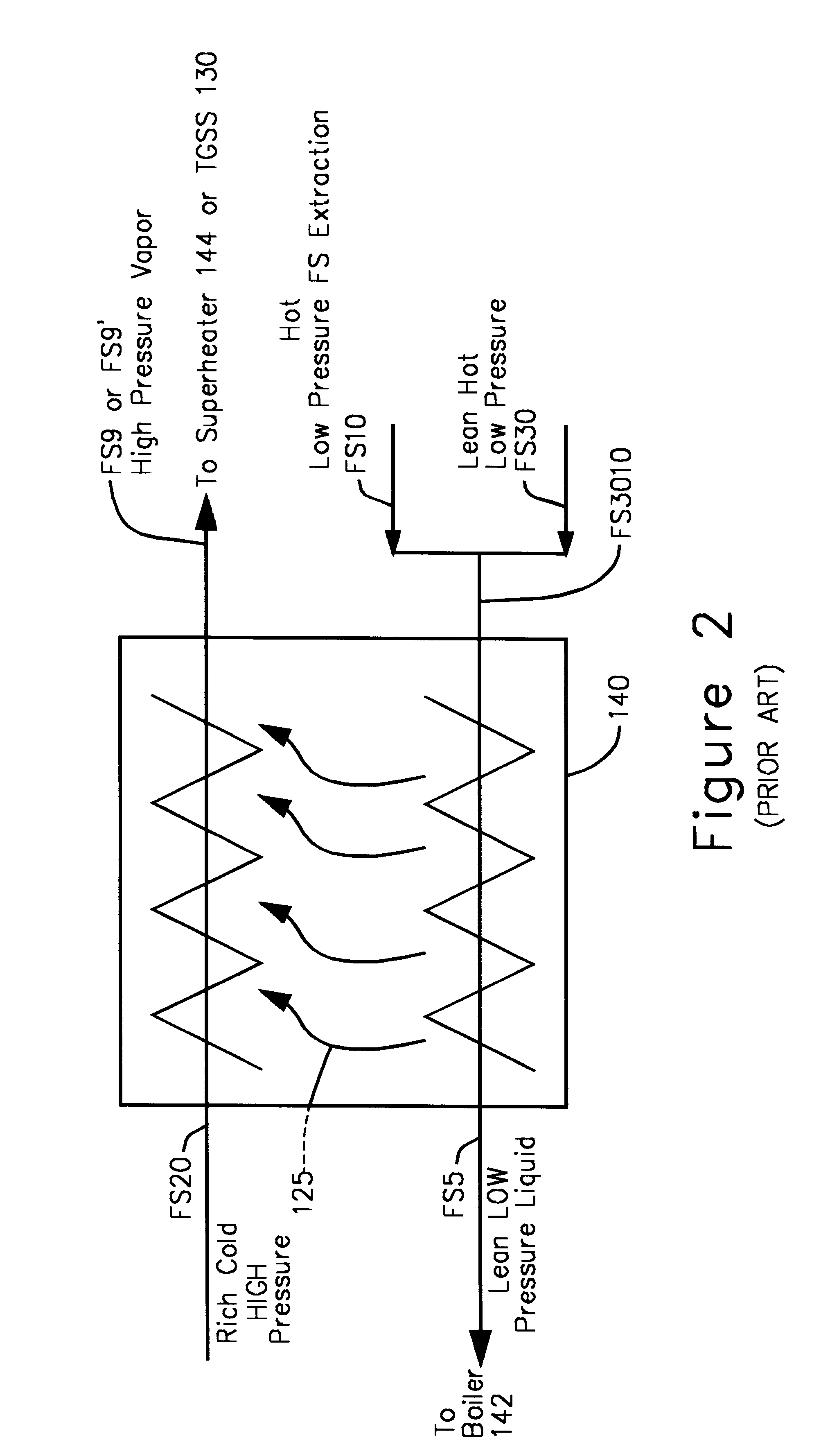Regenerative subsystem control in a kalina cycle power generation system
a power generation system and subsystem control technology, applied in steam engine plants, machines/engines, mechanical equipment, etc., can solve the problems of premature failure of the tubes, difficulty in achieving further efficiency gains in conventional, rankine cycle-based power plants, and high temperatur
- Summary
- Abstract
- Description
- Claims
- Application Information
AI Technical Summary
Benefits of technology
Problems solved by technology
Method used
Image
Examples
Embodiment Construction
As has been discussed above and with reference to FIG. 5A and 5B, in order for a Kalina cycle power generation system to be used in commercial implementations, the system must provide the superheated vapor flow needed by the TGSS 130 to generate the required power to meet the load demand, while at the same time providing the necessary feed fluid flow to the boiler to cool the boiler tubes 142a, even during unusual operational and / or environmental conditions which occasionally arise in commercially operating power generation systems.
More particularly, a Kalina cycle power generation system used in a commercial implementation must be operable even when subjected to unanticipated operating conditions such as operation during periods when only out of specification fuel grades are available for generating process heat, when the ambient temperature, humidity and atmospheric pressure are extreme, and / or when unusually large and / or quick swings in load demand occur. That is, the system must...
PUM
 Login to View More
Login to View More Abstract
Description
Claims
Application Information
 Login to View More
Login to View More - R&D
- Intellectual Property
- Life Sciences
- Materials
- Tech Scout
- Unparalleled Data Quality
- Higher Quality Content
- 60% Fewer Hallucinations
Browse by: Latest US Patents, China's latest patents, Technical Efficacy Thesaurus, Application Domain, Technology Topic, Popular Technical Reports.
© 2025 PatSnap. All rights reserved.Legal|Privacy policy|Modern Slavery Act Transparency Statement|Sitemap|About US| Contact US: help@patsnap.com



